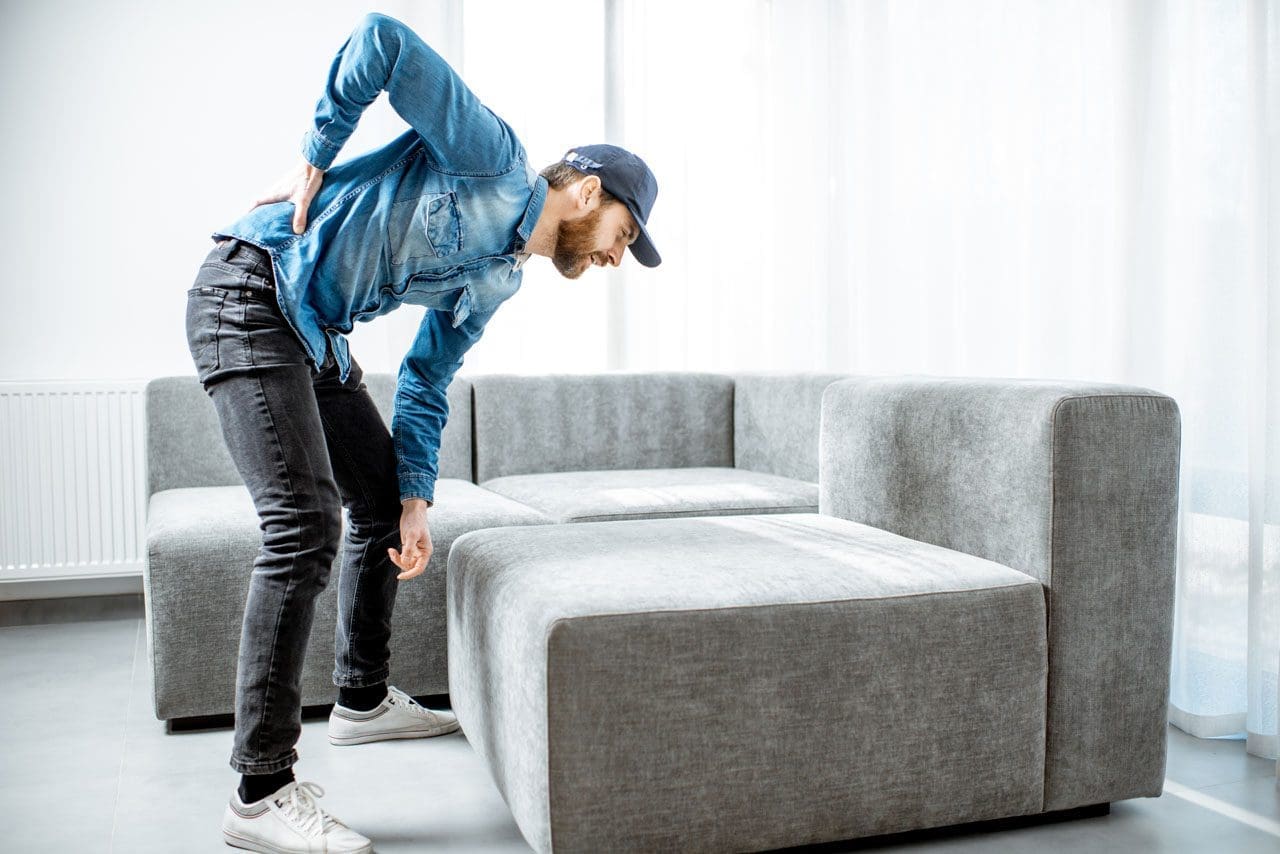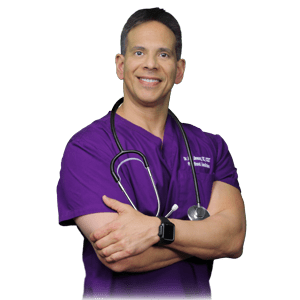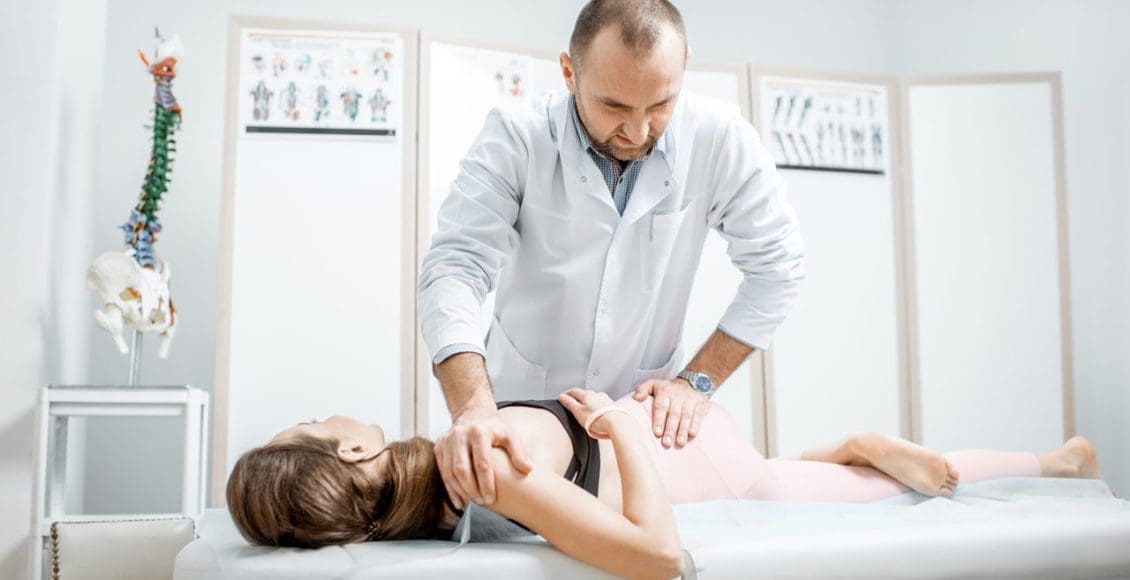Are you experiencing back pain right now? The impact may seem identical, although it can be characterized as a dull throb or a sharp pain. Your life may have already been negatively affected as a result of your back pain. Some estimates show that 80 percent of people may experience distress or back pain at any point in their life. And from an employer’s perspective, more than 25 percent of those working adults missed a period at work following back pain in the previous few months. Back pain can be aggravating. The pain and discomfort might only last a few days or a couple of weeks; however, it may often become a chronic health issue if left untreated for an extended period, impacting the lives of the average person and athletes.
Typically, back pain originates from a mechanical problem caused by the regular wear-and-tear of the spine and is associated with the aging process of the human body. Daily usage, or the average movement during the day, can take a toll on the structure and function of the spine, discs, and joints. Sprains and strains, skeletal irregularities, or being involved in an auto accident can also cause the degeneration of the spine, but the results are the same. While anyone can experience back pain, some factors can raise the risk, including age, fitness level, pregnancy and weight gain, occupational risk factors with physically demanding tasks, preexisting mental health difficulties, and even overloaded backpacks carried by school children.
Fortunately, relief can be achieved through chiropractic care. Experts estimate that roughly 22 million Americans visit their chiropractor each year, and 35 percent of these patients are seeing their chiropractor get a remedy for their back pain, recurring neck pain, headaches, and numbness or tingling in their arms and legs.

Table of Contents
Chiropractic Care Helps Back Pain
Chiropractic care involves the manipulation of the spine with varying levels of pressure exerted through a treatment method intended to restore the health of the human body. The hope is the proper alignment of the spine, adjusted during a process known as a spinal adjustment, to allow the body to heal without forcing the individual to switch to surgical interventions or the use of drugs and/or medication. Patients can expect a thorough evaluation with a comprehensive questionnaire followed by a physical examination. Lab tests and diagnostic instruments might be used to diagnose the source of back pain.
Spinal manipulation or adjustments take place on densely padded treatment tables, which place the patients lying down and allow the chiropractor to apply the necessary pressure. During these spinal adjustments, patients can experience the benign “popping” or “crackling” sound often associated with chiropractic care. A chiropractor might also utilize ultrasound therapy, electrical stimulation, and massage therapy to treat patients. Chiropractors might additionally suggest nutritional advice, such as the usage of vitamins, as well as recommend a few exercises to enhance the patient’s strength, flexibility, and movement in order to help speed up the recovery process.
Chiropractic care is a well-known alternative treatment option for back pain. Some patients feel immediate relief following treatment, although a couple of people may experience mild aching or soreness. Before seeking a diagnosis for your back pain, however, it may be important for you to first understand several of the common causes of back pain. Having an understanding of the types of injuries and/or conditions that could be the source of your symptoms could help you and the chiropractor arrange the best type of treatment for your specific cause of back pain. Below are six of the most common causes of mechanical back pain.
Causes of Mechanical Back Pain
The most common causes of back and neck pain are mechanical, meaning they may manifest due to the movements of the spine. The mechanical parts of the spine include the tendons, ligaments, muscles, intervertebral discs, and facet joints. The most frequent region for mechanical back pain is the lumbar spine or the lower back. This area of the spine disperses and absorbs the majority of the human body’s weight during active and static movement. Static means the body is stationary (e.g., standing) although not actively moving (e.g., walking). Meanwhile, the neck, or the cervical spine, is the most mobile spinal column region. Here, the spine supports the weight of the head. The diversity of motion includes nodding, bending forward, backward, and side-to-side movements.
However, even if the body isn’t moving, parts of the body continue to support the spine. Mechanical forces, such as gravity, pressure, compression, and stress, can still affect the spine. Below are six of the most common causes of mechanical back pain.
Back or Neck Sprain and Strain
A back or neck sprain occurs when a ligament of the spine, or a complex group of strong tissues that hold the bones of the spine together, is overstretched or torn as a result of trauma from an injury. In contrast, neck or back strain involves the over-stretching or tearing of a muscle or tendon attachment due to an injury. Because a sprain or strain can affect any of the complex structures in the spine, finding the exact source of the patient’s symptoms may be challenging without the proper equipment. If you sprain or strain your back (or neck), the delicate tissues are hurt and respond by swelling, thus causing pain and discomfort. Muscles that are affected may go into spasms which can also be painful. Stiffness is another symptom that may make movement difficult.
Disc Herniation
Intervertebral discs divide the drum-shaped vertebral bodies of the spine. Each disc is carefully anchored into place by endplates, a fibrous connective tissue that makes up each intervertebral disc. Intervertebral discs are fibrocartilage and allow a small movement at each vertebral segment (2 vertebrae and one disk). The disc’s outer ring, known as the annulus fibrosis, protects the internal workings center of the disc, known as the nucleus pulposus. Disc herniation occurs when the gel-like substance breaks through the outer ring, often causing nerve compression, inflammation, irritation, and pain. Pain may radiate or travel down to an arm or leg, depending on the region of the spine where the herniation occurred. Weakness, numbness, and tingling sensations can accompany pain and discomfort associated with the herniation of the discs. In addition, an intervertebral disc may rupture in various directions: front (anterior), back (posterior), and/or side (lateral), causing stress against the complex structures of the spine.
Vertebral Compression Fracture (VCF)
A vertebral compression fracture occurs when force from an impact causes the vertebrae of the spine to collapse. Trauma (e.g., fall) is a common cause of vertebral compression fracture, though VCF is often related to osteoporosis, a weight loss reduction of bone mineral density and strength. A VCF can also occur during bending forwards or lifting. These fractures usually result in sudden and severe back pain.
Lumbar Spinal Stenosis (LSS)
Spinal stenosis in the lower back, or lumbar spine, develops when the nerve root passageways and/or the spinal canal become narrow. As a matter of fact, the term stenosis means “narrow.” When complex structures of the spine, such as the nerve roots, are compressed as a result of the narrowing of the spinal canal, the dominating symptoms include pain and discomfort, which radiates into one or both legs, a commonly known collection of symptoms referred to as sciatica. Lumbar spinal stenosis, or LSS, prevalently affects adults and may be related to hormonal changes which cause tissue or bone to develop into neural pathways, compressing the spinal cord canal.
Spinal Osteoarthritis (Spondylosis)
Spondylosis is a medical term used to define degenerative spinal osteoarthritis; frequent in older adults. Similar to other kinds of arthritis, spondylosis can affect the facet joints, causing symptoms of swelling, stiffness, and pain in the back. It might develop in the neck, known as cervical spondylosis; mid-back, known as thoracic spondylosis; and lower back, known as lumbar spondylosis. Spondylosis can consist of degenerative changes that can often lead to disc herniation and spinal stenosis.
Spondylolisthesis
If one vertebral body slips forward over the vertebra underneath, it is characterized as spondylolisthesis. Spondylolisthesis may occur in the neck; however, this condition most commonly affects the lower back or lumbar spine. Diagnosing and identifying the severity of a patient’s spondylolisthesis includes determining the degree of the vertebrae’s movement. Grade 1 means the vertebra has shifted forward by about 25 percent, whereas Grade 5 refers to a complete slip of the vertebra, known as spondyloptosis. Grade 5 might be caused by a fracture of the bone that helps stabilize the placement of the vertebrae. Aside from pain and discomfort, severe muscle spasms and sciatic-type symptoms may develop.
 Dr. Alex Jimenez’s Insight
Dr. Alex Jimenez’s Insight
Although back pain is one of the most common complaints frequently treated in the medical field today, properly treating it may often be difficult because the source of the symptoms may be due to a variety of spinal health issues, including sprains and strains, as well as spinal disc herniation and spinal stenosis. Chiropractic care is a popular, alternative treatment option commonly utilized to diagnose, treat and prevent a variety of injuries and/or conditions associated with the musculoskeletal and nervous system. After a chiropractor performs a thorough medical evaluation, the back pain specialist may use spinal adjustments and manual manipulations to carefully restore the original alignment of the spine. By correcting spinal misalignments, or subluxations, a chiropractor can release the tension and pressure being placed agains the spine, allowing the human body to naturally heal without the need for surgical interventions and drugs and/or medications. Visit a chiropractic care office to discuss the treatment options for your specific type of back pain.
In conclusion, back pain can occur due to various injuries and/or conditions. However, mechanical back pain, caused by the movement of the spine, has been referred to as the most common cause of back pain and spine health issues. Understanding the type of injuries and/or conditions discussed above can help you and the healthcare professional determine the best type of treatment for your specific health problems. Chiropractic care is a well-known alternative treatment option to help treat back pain symptoms, among other health issues.
Additional Topics: Back Pain
According to statistics, approximately 80% of people will experience symptoms of back pain at least once throughout their lifetimes. Back pain is a common complaint that can result due to a variety of injuries and/or conditions. Often, the spine’s natural degeneration with age can cause back pain. Herniated discs occur when an intervertebral disc’s soft, gel-like center pushes through a tear in its surrounding outer ring of cartilage, compressing and irritating the nerve roots. Disc herniations most commonly occur along the lower back or lumbar spine but may also occur along the cervical spine or neck. The impingement of the nerves found in the low back due to injury and/or an aggravated condition can lead to symptoms of sciatica.
EXTRA IMPORTANT TOPIC: Back Pain Treatment
MORE TOPICS: EXTRA EXTRA: El Paso, Tx | Athletes
Post Disclaimer
Professional Scope of Practice *
The information on this blog site is not intended to replace a one-on-one relationship with a qualified healthcare professional or licensed physician and is not medical advice. We encourage you to make healthcare decisions based on your research and partnership with a qualified healthcare professional.
Blog Information & Scope Discussions
Welcome to El Paso's Premier Wellness and Injury Care Clinic & Wellness Blog, where Dr. Alex Jimenez, DC, FNP-C, a board-certified Family Practice Nurse Practitioner (FNP-BC) and Chiropractor (DC), presents insights on how our team is dedicated to holistic healing and personalized care. Our practice aligns with evidence-based treatment protocols inspired by integrative medicine principles, similar to those found on this site and our family practice-based chiromed.com site, focusing on restoring health naturally for patients of all ages.
Our areas of chiropractic practice include Wellness & Nutrition, Chronic Pain, Personal Injury, Auto Accident Care, Work Injuries, Back Injury, Low Back Pain, Neck Pain, Migraine Headaches, Sports Injuries, Severe Sciatica, Scoliosis, Complex Herniated Discs, Fibromyalgia, Chronic Pain, Complex Injuries, Stress Management, Functional Medicine Treatments, and in-scope care protocols.
Our information scope is limited to chiropractic, musculoskeletal, physical medicine, wellness, contributing etiological viscerosomatic disturbances within clinical presentations, associated somato-visceral reflex clinical dynamics, subluxation complexes, sensitive health issues, and functional medicine articles, topics, and discussions.
We provide and present clinical collaboration with specialists from various disciplines. Each specialist is governed by their professional scope of practice and their jurisdiction of licensure. We use functional health & wellness protocols to treat and support care for the injuries or disorders of the musculoskeletal system.
Our videos, posts, topics, subjects, and insights cover clinical matters and issues that relate to and directly or indirectly support our clinical scope of practice.*
Our office has made a reasonable effort to provide supportive citations and has identified relevant research studies that support our posts. We provide copies of supporting research studies available to regulatory boards and the public upon request.
We understand that we cover matters that require an additional explanation of how they may assist in a particular care plan or treatment protocol; therefore, to discuss the subject matter above further, please feel free to ask Dr. Alex Jimenez, DC, APRN, FNP-BC, or contact us at 915-850-0900.
We are here to help you and your family.
Blessings
Dr. Alex Jimenez DC, MSACP, APRN, FNP-BC*, CCST, IFMCP, CFMP, ATN
email: coach@elpasofunctionalmedicine.com
Licensed as a Doctor of Chiropractic (DC) in Texas & New Mexico*
Texas DC License # TX5807
New Mexico DC License # NM-DC2182
Licensed as a Registered Nurse (RN*) in Texas & Multistate
Texas RN License # 1191402
ANCC FNP-BC: Board Certified Nurse Practitioner*
Compact Status: Multi-State License: Authorized to Practice in 40 States*
Graduate with Honors: ICHS: MSN-FNP (Family Nurse Practitioner Program)
Degree Granted. Master's in Family Practice MSN Diploma (Cum Laude)
Dr. Alex Jimenez, DC, APRN, FNP-BC*, CFMP, IFMCP, ATN, CCST
My Digital Business Card


